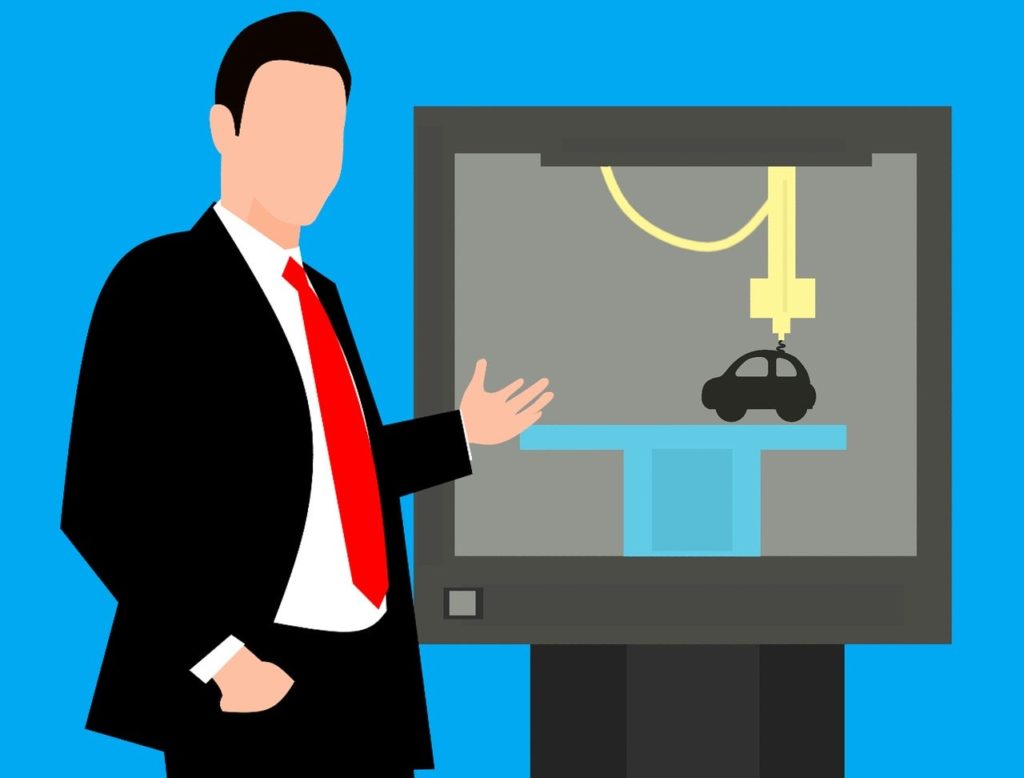If you are currently working as a mechanical engineer, a graduate fresh out of college or are looking to get into the mechanical engineering field, then you like many others may be wondering is there a place for a mechanical engineer in the IT field.
First, if you’re looking to launch your own blog and start writing articles yourself, no matter what the subject, you can launch your blog with Bluehost for just $3.95/month.
Start creating content and launch your blog with Bluehost.
As time has progressed the world has gradually became integrated with technology more and more with computers, the Internet and electronics being widely used.
Mechanical engineering is one of the oldest disciplines in the field of engineering. Throughout history mechanical engineers have mainly worked in aviation, construction, industrial production and other industries that develop and use tools, equipment and machines.
Now, the role of a mechanical engineer has changed and evolved, and this has led to a mechanical engineer also being indispensable in the IT field. Mechanical engineers are still very in-demand across all industries and the IT field is no exception. A mechanical engineer’s job is not becoming obsolete or unnecessary, it is actually quite the opposite.
The profession of mechanical engineering has evolved immensely over the years with regards to technology. The majority of educational institutions now offer Computer Aided Design (CAD) on programs like AutoCAD, Revit, Inventor, Fusion 360 and Civil 3D, Computer Aided Manufacturing (CAM), design engineering and drafting as part of the coursework for their mechanical engineering degrees. Courses in technology (among others) are available on LinkedIn Learning, which allows mechanical engineers to keep up to date on their skills.

Mechanical Engineer’s IT Related Duties
- Recommend design changes or modifications to ensure there will be normal functions in a machine or system
- Read and interpret technical drawings, blueprints, technical illustrations and computer generated reports
- Use software programs to develop and test design models to assess their feasibility
- Research and assess design specifications and proposals
- Investigate equipment and system failures And their causes, and provide feedback to design engineers and drafters
- Use CAD and other drafting software to develop structural designs for products
In industrialized countries, the role of a mechanical engineer heavily involves the use of computer aided engineering tools. If these tools were not to be used it would be very difficult for mechanical engineers to perform analysis, create designs and utilize designing interfaces.
Mechanical Engineering Sub-Disciplines
Mechanical engineering includes a vast array of sub-disciplines, with a few of them directly relating to the IT field, these are:
Drafting and Design
This is an interdisciplinary branch of mechanical engineering and software engineering, it is used to design and create products to be used as machine parts and in manufacturing equipment among many other applications.
Mechatronics
Mechatronics is a multidisciplinary branch of engineering that focuses on the engineering of both mechanical and electrical systems, and it also includes a combination of computer, control, electronics, telecommunications, robotics, systems, and product engineering.

Robotics
Robotics is the study of robots. Robots are machines that can be used to do jobs, some robots can do work for them selves, other robots must always have a person telling them what to do. It is also another branch of mechanical engineering that aims to develop robustly designed robots to perform various tasks, applications and functions.
A lot of people seem to think that mechanical engineering will become automated and is outdated in this modern era. In 2009, there were almost 2,000,000 mechanical engineers employed in the United States alone, with the median annual income of $74,900.
If you are a mechanical engineer, looking to become a mechanical engineer or are just interested in the field, rest assured that as long as mechanical engineers keep their knowledge and skills up-to-date they will not have any problems landing a well-paid job.
Mechanical Engineers in Silicon Valley
It has been said by famous Silicon Valley businessman Marc Andreessen that software will devour the globe. It is also becoming apparent that Silicon Valley’s business model has little jobs for mechanical engineers, the professionals who design the actual computer/systems and their parts.
There is a digital uprising happening around the world. Andreessen’s prediction of software eating up the real world is coming true. Even the most stubborn physical industries (agriculture, construction and manufacturing) are getting a new digitsl makeover courtesy of the Internet of Things (IoT).

The Internet of Things simply put is a model of connection and not really a form of technology. It creates the possibility for any physical object or device (HVAC systems, sensors, cars) to be able to get connected to the “web” and any other device.
The Internet of Things is not a technology fad, it is not solely for the purpose of using your smart phone to turn off the lights in your living room or your thermostat. It is becoming essential in industries varying from logistics to healthcare as emerging networks of connected things/devices are becoming essential. The conversation has moved away from: “What is the Internet of Things?” to “How is the Internet of Things going to improve or help my business?”
It is estimated that in the next few years there will be upwards of 26 billion devices connected around the world. If it is possible to be connected, it will be, and once these connections grow stronger they will inevitably change corporate and human behavior in the same way that the development of the smart phone technology and the Internet did.
As the Internet of Things grows and becomes more important, it gives birth some important questions. The Internet of things will seek to operate physical devices/machines that will require knowledge of some engineering principles (thermodynamics, stress, force). This will require the input of a mechanical engineer and this will create plenty of opportunities for skilled mechanical engineers to satisfy the Internet of Things boom.
Skills and Responsibilities
Companies in Silicon Valley will require employees who can successfully merge the gap between IT and engineering. The demand for the Internet of Things is set to rise from 11% to 14% every year over the next 5 years. There is going to be a merging of algorithms, assets, sensors, cloud/information needs, someone with experience in mechanical engineering and industrial assets along with IT skills will be a very attractive prospective employee.
Until now, the world has experienced tunnel vision, it was either Information Technology or Operational Technology (OT). The world is now at a stage where skills derived from both sectors are needed by companies.
This will involve the generic computer science and IT skills, like web programming, geographical systems and machine learning. However, employees will also need to possess mechanical engineering knowledge including Arduino software and AutoCAD among other software programs used to recognize and control physical objects.

The mechanical engineers that do work in the IT field, must posses something more substantial than just traditional skills. We are at a stage where almost all mechanical engineers need some sort of knowledge of software engineering.
If you possess a gap in your knowledge for the Internet of Things or the cloud, or even around coding/data you will be at a huge disadvantage. Especially when the role of mechanical/software engineers will need to be seamless throughout the lifespan of any IT project.
This is going to result in a new group of engineers that could be known as “digital engineers”. The integration of mechanical engineering with software engineering and the IT field will define their place in future industries.
Thank you very much for being here – we appreciate you taking the time to read our content. If you have anything to add, please feel free to leave a comment down below, and sign up to our newsletter for more of the same!
You can also follow us on LinkedIn, Facebook, Twitter, and Instagram so you can stay up to date.



